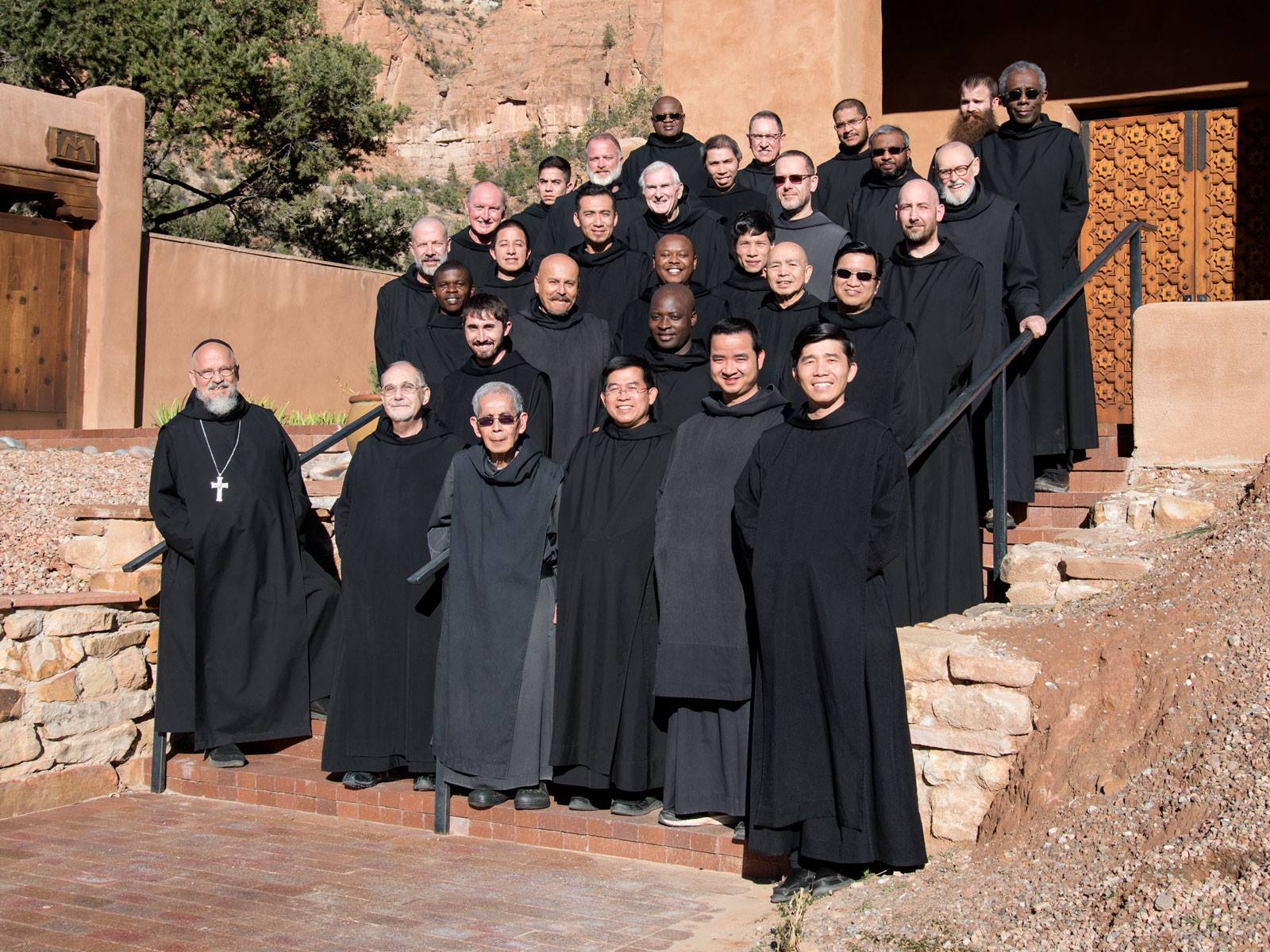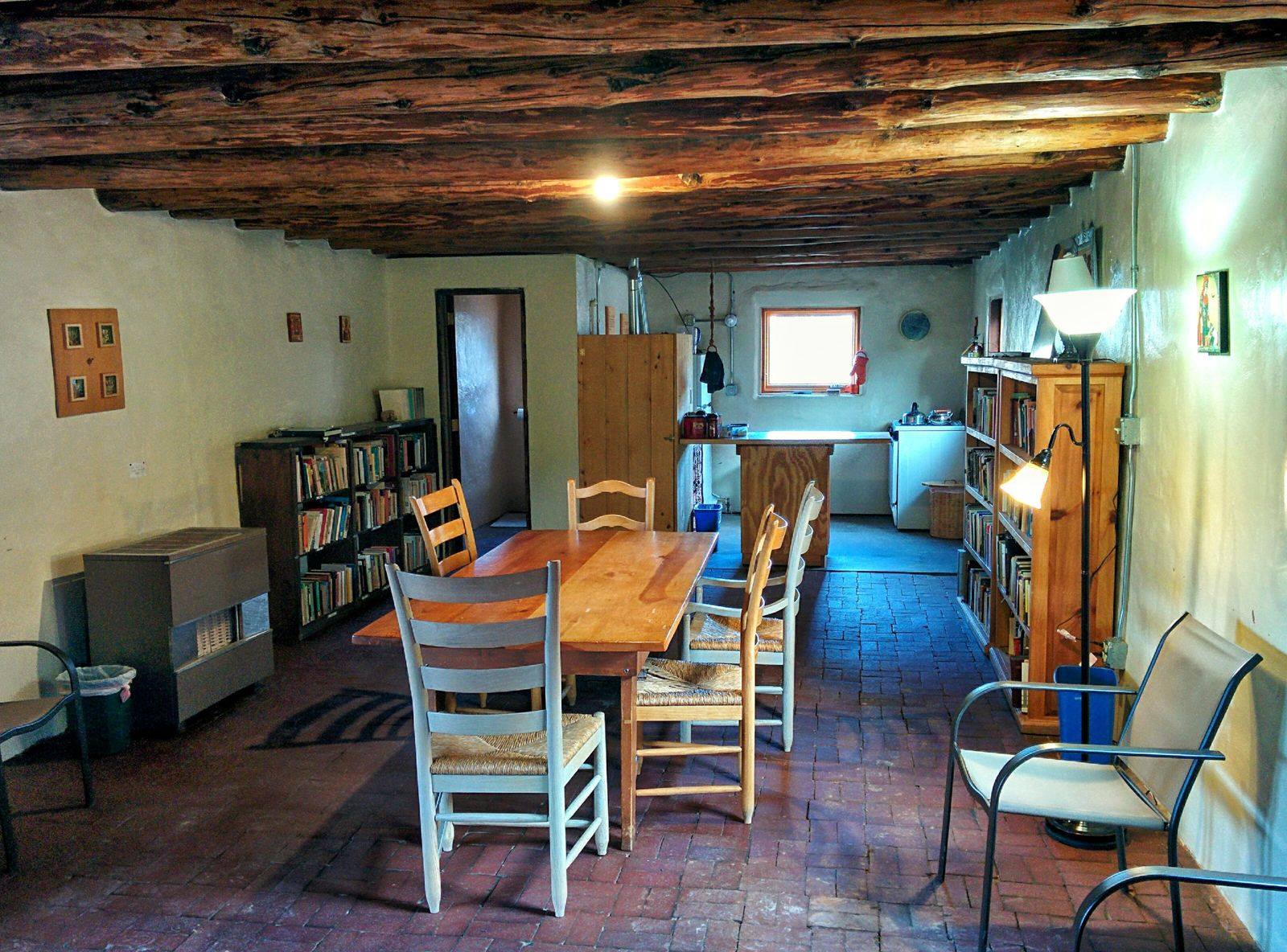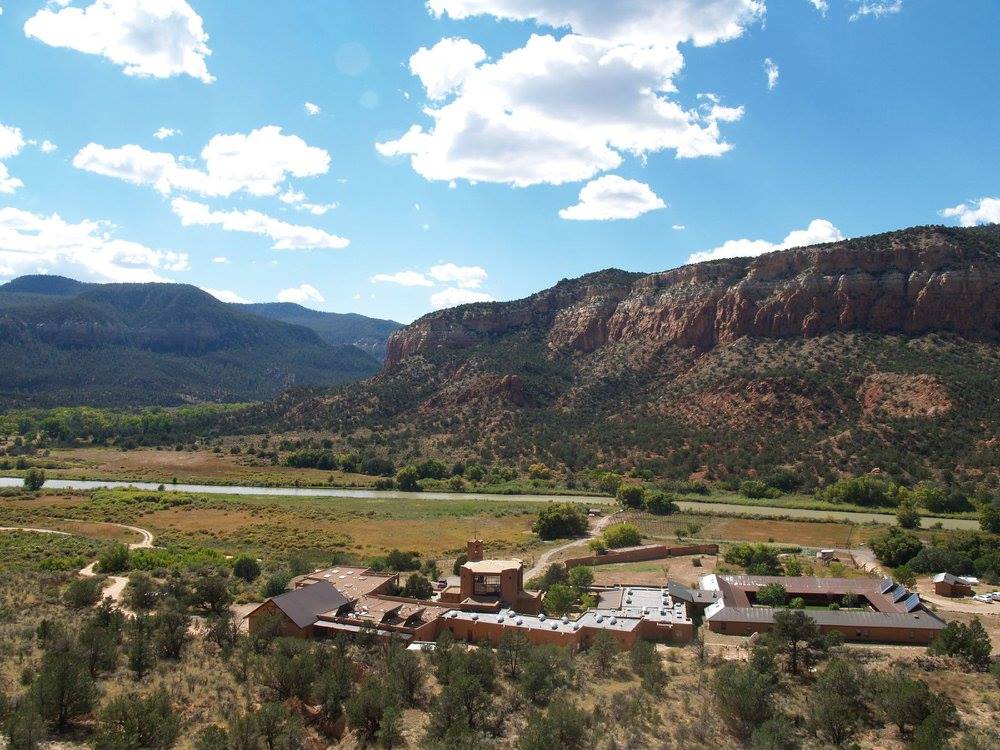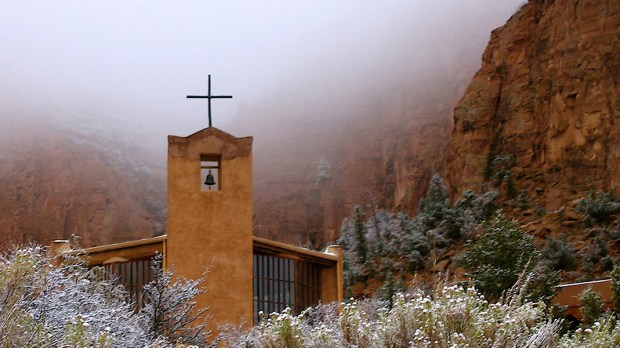The Monastery of Christ in the Desert is located in Abiquiu, New Mexico, about 100 kilometers north of Santa Fe. It was founded in 1964 by Fr. Elredo Pared, accompanied by a group of monks coming from the monastery of Mount Savior, in New York. In 1983, the Monastery of Christ in the Desert became part of the English Province of the Congregation of Subiaco, as a Conventual Priory, and became an autonomous abbey in 1996.

But from its very beginnings, long before it was autonomous, the monastery (like every other Benedictine community) has tried to live its daily life in strict adherence to the Rule of St. Benedict, without external apostolates, but maintaining a hostel for private retreats, where men and women can share the prayer of the divine office and the celebration of the Mass in the church of the abbey with the monks. In addition to maintaining the guesthouse, the monks are engaged in manual labor (thus enabling the abbey to self-supply and self-manage) and to the maintenance and operations of the monastery, the community, and its guests. A gift shop, which includes an online store where books and quality religious and artistic articles are available, also provides part of the monastery’s income.

The Monastery of Christ in the Desert, as its name clearly shows, is found in the Chama Canyon desert, a place of extraordinary beauty in northwestern New Mexico, halfway between Santa Fe and Chama. One arrives to the monastery after traveling 13 miles along a dirt and gravel road outside Route 84. Along the way, you can see beautiful natural formations: cliffs, tree-covered mountains and the Chama River, as the road leading to the monastery passes through the middle of the valley. The monastery, it goes without saying, is surrounded by miles of a government-protected desert landscape, thus the solitude and tranquility of monastic life is assured.

Precisely because of its location in the middle of the desert, the energy for electricity and pumping water in the monastery is all provided by solar panels. The monastery is strongly committed to sustainable and ecological management in solving its daily operational needs.
The main architect of the original monastery, including the church, the monastery, the monks’ cells and the inn, was George Nakashima, the famous Japanese designer and carpenter. To learn more about the monastery, plan retreats or simply admire the beauty of architecture, monastic life and the surrounding nature, you can visit the monastery’s website here.

